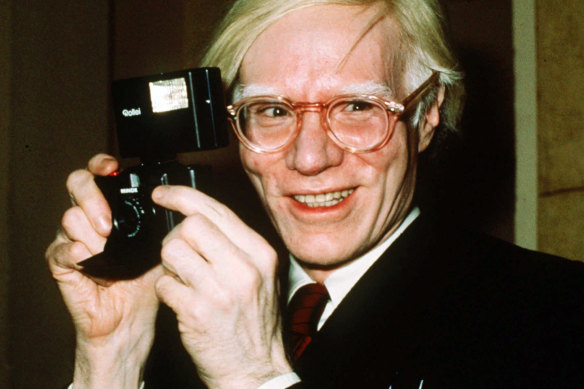Warhol died in 1987, and the Andy Warhol Foundation for the Visual Arts assumed ownership of his work. When Prince died in 2016, Vanity Fair’s parent company, Conde Nast, published a special issue celebrating his life. It paid the foundation $US10,250 to use a different image from the series for the cover. Goldsmith received no money or credit.
Litigation followed, much of it focused on whether Warhol had transformed Goldsmith’s photograph. The Supreme Court has said a work is transformative if it “adds something new, with a further purpose or different character, altering the first with new expression, meaning or message”.
Some justices suggested Warhol’s work had cleared that bar.
‘A ruling for Goldsmith would strip protection not just from the Prince series but from countless works of modern and contemporary art.’
Roman Martinez, lawyer for the Warhol foundation
“It’s not just that Warhol has a different style,” Chief Justice John Roberts said. “It’s that, unlike Goldsmith’s photograph, Warhol sends a message about the depersonalisation of modern culture and celebrity status.”
He added: “One is the commentary on modern society. The other is to show what Prince looks like.”
Kagan said Warhol’s success was evidence that his work added to the meaning of his source materials.
Loading
“Why do museums show Andy Warhol?” she asked. “They show Andy Warhol because he was a transformative artist, because he took a bunch of photographs and he made them mean something completely different. And people look at Elvis and people look at Marilyn Monroe or Elizabeth Taylor and Prince, and they say this has an entirely different message from the thing that started it all off.”
But Justice Samuel Alito said judges might not make good art critics.
“How is a court to determine the purpose of meaning, the message or meaning of works of art like a photograph or a painting?” he asked Roman Martinez, a lawyer for the Warhol foundation, adding, “You make it sound simple, but maybe it’s not so simple.”
Other justices peppered Martinez with sceptical questions.
Justice Sonia Sotomayor said the photographer and the artist had competed in the same market.

In a series of 16 images, Warhol altered the photograph in various ways, notably by cropping and colouring it to create what his foundation’s lawyers described as “a flat, impersonal, disembodied, mask-like appearance”.Credit:AP
“They both sell photographs to magazines,” she said, “and they both sell photographs to magazines to display Prince’s vision or Prince’s look.”
Justice Amy Coney Barrett questioned whether Warhol had to use Goldsmith’s image of Prince.
“Warhol didn’t need Goldsmith’s particular photo, right?” she asked. “I mean, it could have been a different photo of Prince.”
Martinez said the case did not turn on whether Warhol had alternatives, and he urged the justices to consider the consequences of their ruling.
“A ruling for Goldsmith,” he said, “would strip protection not just from the Prince series but from countless works of modern and contemporary art.”
Lisa S. Blatt, a lawyer for Goldsmith, said it was not enough to say that “Warhol is a creative genius who imbued other people’s art with his own distinctive style”.
“Spielberg did the same for films and Jimi Hendrix for music,” she said. “Those giants still needed licences.”
She added that a ruling for Warhol would create mayhem in the marketplace.
“Copyrights will be at the mercy of copycats,” she said. “Anyone could turn Darth Vader into a hero or spin off All in the Family into The Jeffersons without paying the creators a dime.”
Loading
Last year, in a case about computer code, Justice Stephen Breyer’s majority opinion appeared to say that the fair-use defence to copyright claims might apply to Warhol’s images of Campbell’s Soup cans and similar works. “An ‘artistic painting’ might, for example, fall within the scope of fair use even though it precisely replicates a copyrighted ‘advertising logo to make a comment about consumerism,’” Breyer wrote, quoting a treatise.
On Wednesday, Justice Neil Gorsuch said the question before the court was more difficult.
“Campbell’s Soup seems to me an easy case because the purpose of the use for Andy Warhol was not to sell tomato soup in the supermarket,” Gorsuch said. “It was to induce a reaction from a viewer in a museum or in other settings.”
The two works at issue in the new case, Andy Warhol Foundation for the Visual Arts v. Goldsmith, Gorsuch said, are “being used arguably maybe for the same purpose, to identify an individual in a magazine.”
This article originally appeared in The New York Times.
The Business Briefing newsletter delivers major stories, exclusive coverage and expert opinion. Sign up to get it every weekday morning.
Stay connected with us on social media platform for instant update click here to join our Twitter, & Facebook
We are now on Telegram. Click here to join our channel (@TechiUpdate) and stay updated with the latest Technology headlines.
For all the latest Business News Click Here
For the latest news and updates, follow us on Google News.
